Daughter, age 7: "Daddy, will the Earth always go around the Sun forever?"
Louis CK: "Well no, at some point the Sun is going to explode."
Daughter: (starts crying)
Louis CK: "Oh honey, this is not going to happen until you and everyone you know has been dead for a very long time."
Daughter: (continues crying)
As you all know, the closest supernova to us in the last quarter-century has recently gone off, currently shining in the faint, but relatively close Pinwheel Galaxy. (And starting tonight, early in the night, those of you with telescopes should go look for it!)
But when I talked about it, there was some confusion as to what it means that this is a supernova, as opposed to a regular nova. Let's start at the very beginning, with the seven different main classes of stars.

When stars are first born, they're made almost exclusively (more than 98%) out of hydrogen and helium. The lowest mass ones are red, cool, and very long-lived, while the highest mass ones are blue, hot, and very short-lived. Our star -- a G-type star -- is somewhere in the middle in terms of mass, color, temperature and for the purpose of this discussion, lifetime.
When our Sun runs out of fuel, it will do the same thing that most stars will do: blow off its outer layers, while the inner core contracts to form a white dwarf star.
But what is this white dwarf star like? Luckily, we have a photo from the Hubble Space Telescope to show us! The A-type star, Sirius, the brightest star in our night sky, has a white dwarf companion star that orbits it, clearly visible next to Sirius itself.
White dwarfs can be the same color, temperature, and nearly the same mass (up to about 70%) of the bright stars that gave rise to them. However, they're both about 10,000 times less bright and a factor of a million lower in volume than the stars they came from.
Made out of the condensed atoms packed closely together under the tremendous force of gravity, but without any nuclear fusion at the core, white dwarf stars, although they can easily be as massive as our Sun, are only physically about the size of Earth, making them around 300,000 times as dense as our planet.
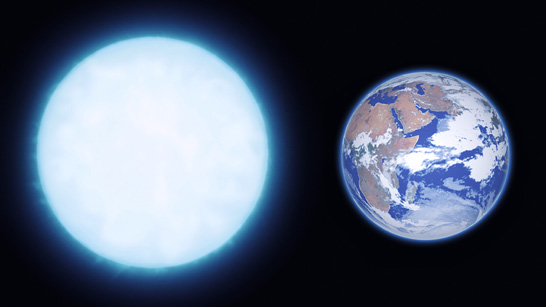
Now, in our Solar System, there is but one star. But, much as is the case for Sirius, a substantial portion of stars exist in binary or even trinary star systems. When a white dwarf star lives in a binary star system with a relatively close companion star, it can begin to gravitationally siphon off some of the mass of the larger, less dense companion!
Unlike the white dwarf star itself, which is made out of heavier elements such as carbon, nitrogen, and oxygen (as well as sometimes neon, silicon, and sulphur, among others), the stolen mass is almost always contains copious amounts of hydrogen, the nuclear fuel that normal stars burn for their energy!
And even though it usually takes thousands of years for enough hydrogen to build up on the surface of a binary white dwarf for this burst of fusion to occur, the sheer number of stars we have access to ensures that our galaxy never has a shortage of white dwarf star bursting with hydrogen fusion. This flare-up is what's known as a nova.
But after a nova, the white dwarf star is fine, and will go back to building up hydrogen on its surface in preparation for another burst, until it recurs.
Some of these white dwarfs, however, were born very massive, with many even exceeding the mass of the Sun. But as you pile more and more mass onto your white dwarf, something counterintuitive happens.
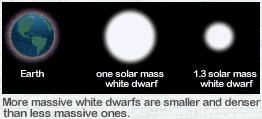
The more massive your white dwarf is, the smaller in size it becomes! The very atoms that make up the star are the only thing holding it up against gravitational collapse, and as you add more and more mass to your white dwarf, the atoms find themselves being compressed into an ever-smaller volume. There are two ways theorized to build up the mass of the white dwarf: one gradual and one sudden.
At some critical point, the nuclei and electrons become so compressed that atomic structure itself begins to buckle. When a white dwarf star gains enough mass so that its total mass exceeds about 138% the mass of our Sun, something spectacular happens!
The atoms at the core of this white dwarf fail to support the star under the tremendous stress of gravity! The white dwarf star is completely destroyed, as the interior collapses down to form a black hole, where nothing can escape! The process of collapse, even though it lasts just a few seconds, results in a tremendous release of energy into the outer layers.
And the outer layers heat up tremendously, expand incredibly rapidly and get strewn across space for light years! This is what a supernova is; in particular, a type I supernova, the same type as the one you can see in the Pinwheel Galaxy, and the same type that occurred in the famed 1572 supernova.
When the fuel in the core runs out, the innermost layers lose the pressure that has held them up against the tremendous pull of gravity. Without that fusion, the cores of these stars collapse, producing a type II supernova. Unlike the one presently in our sky, these supernova often collapse their cores into a single gigantic atomic nucleus, known as a neutron star! Although they are -- again -- of approximately the same mass as our Sun (although many are perhaps two or three times as massive), they are only a few kilometers in size! Some of these neutron stars rapidly rotate and emit massive amounts of radiation; these rapidly rotating neutron stars known as pulsars, such as the one left over from the 1054 explosion that created the Crab Nebula.
Unlike a regular, plain old nova, a supernova completely destroys the star that emits it, and at peak brightness, a supernova can be so luminous that it may outshine the entire galaxy it occurs in for a time!
When you see a supernova, you are seeing the culmination of a star's life, after it has exhausted the entirety of its core's nuclear fuel. Some of them (the ones that are type I) take billions of years to form, and do it after growing from a white dwarf, while others (the ones of type II) can do it in just a few million.
So what makes a supernova so super? Try living for ten billion years and then exploding with such incredible power that you outshine your entire galaxy. That's what makes them super! Now go out there and see it for yourself!
Update 9/17/11: There are a number of details that I have given that are out-of-date in the article. (See here.) Normally, I would strike them out and replace them with the correct ones, but there is too much this time. A full update on supernovae is coming next week!



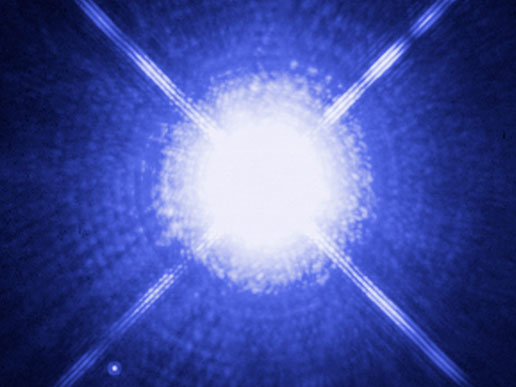
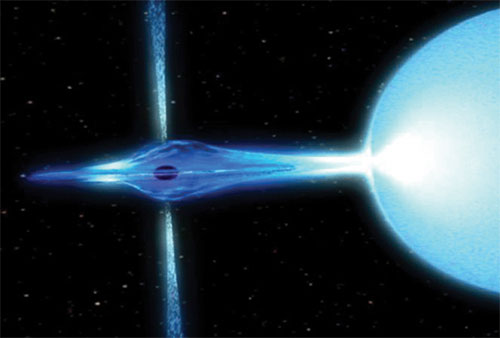




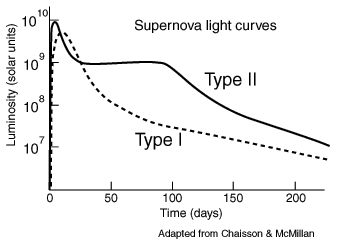

Why doesn't a Type 1a supernova produce a neutron star? I'd always thought that a neutron star was for an object that had too much mass to remain a white dwarf, but not enough for its gravity to overcome neutron-neutron repulsion. Apparently from your post, I'm completely and totally wrong!
AJ, there is actually a well-supported school of thought that says that type Ia supernovae don't produce any leftover relic of the explosion; that they are completely blown/torn apart during the supernova process! The physics is a bit too complicated for me to explain in a brief manner, but wikipedia does a decent job: http://en.wikipedia.org/wiki/Type_Ia_supernova#Consensus_model
We can be very confident that it doesn't produce a neutron star because of the fact that exactly zero pulsars have resulted from type Ia supernovae based on all the supernova remnants we've identified, while a very large number of neutron stars have been discovered to correlate with type II supernovae.
Your picture works for type II (core-collapse) supernovae; above a certain mass, they form a black hole, while below a certain mass, you get a neutron star.
Ethan, the density of a white dwarf is much less than that of a neutron star. Neutron stars have a higher mass and a much lower radius. If neutron stars are stable against the formation of a black hole, then certainly white dwarfs should be.
If white dwarfs don't collapse into neutron stars, that is only because they are too hot, there is too much thermal energy for the mass to remain unbound.
If the deflagration wave of carbon burning in a white dwarf does turn into a shock, then it is conceivable that there could be regions of high density produced that did form black holes. But that would be unlikely because it would require pretty much simultaneously initiation of deflagration on opposite sides of the white dwarf so the shock waves intersected and produced net compression of macroscopic quantities such that the gravity of that compressed region would be enough to maintain the high density. Neutron stars have densities ~10^9 higher than a white dwarf and it takes a much higher density to reach a black hole.
http://en.wikipedia.org/wiki/White_dwarf
I think you would need essentially a triggered implosion, where the initiation was triggered simultaneously at multiple points on the surface to trigger imploding shock waves.
What makes a supernova "super" is that much of the energy is tied up in the shock wave. To those who don't appreciate what that means, a "shock" is a discontinuous propagating wave. It is only a few mean-free-paths thick. In air, that is about 0.1 microns. In something with a very short mean-free-path it is even thinner. The reason shocks are so destructive is because they are discontinuous, the material doesn't have time to deform and spread the load before the shock disrupts it. Shocks aways propagate faster than the speed of sound in the unshocked media (and at the speed of sound in the shocked media).
In the case of a white dwarf, if the carbon burning does transition to a detonation, that means that the combustion front becomes as thin as the shock and the reaction energy is liberated as the shock passes through it, and the energy of the reaction gets added to the shock (and also used to heat the shocked media). In the case of high explosives, something like 40% of the energy ends up in the shock. That is what makes them so destructive. Putting the energy of pounds or tons of explosive into something as light and thin as a sheet of paper (the shock), means it has to be moving very fast.
If you move something at supersonic speed, even if it is only a few microns, you necessarily disrupt anything holding it together that propagates at the speed of sound (things like tensile strength).
I'm no expert, but it seems to me that the Wikipedia link in Ethan's comment #2 gives a fundamentally different explanation (in terms of energy source) to the one in the main post. In the Wikipedia article, the energy comes from a runaway thermonuclear explosion that fuses moderately heavy elements (carbon, oxygen) to iron, while in the post it comes from gravitational collapse to a black hole.
So, to clarify, Ethan, is your explanation here presented as an alternative to the consensus (Wikipedia language) one? Do we see black holes after Type 1s? Or am I missing something?
I love to plunk down my scope anywere and anyplace. Be it at the dark parking lot at the northcoast or just in front of my shop. When and if possible I want to look and see.
Soon people will show up and start asking questions. And in no time they are glued to the eyepiece.
But what strikes me most is indeed the reaction when you hit the End Of All Times ie no more sun or how very very very very big space is. And indeed how very very very small we are (why I allways have some pics of our little planet as seen from outer space in my carrier book case).
You see people actually very shook up by it all.
That and how little people know about us, the sky, the universe etc.
However I´ve never made little girls cry.
Great article - thanks. :-)
Pinwheel galaxy in this case referring Messier 101 as opposed to M33 - otherwise known as the Triangulum galaxy but also sharing that name and not to be confused with Messier 83 the *Southern* Pinwheel galaxy.
SN1987 A was closer - in the Large Magellanic Cloud - and took place 24 years ago but those in the northern hemisphere missed out just as us in the Southern hemisphere (Aussie speaking here) are missing out this time.
Our Milky Way is kinda overdue for a supernova although we may have missed some because of galactic "geography" and dense obscuring dustclouds. I'm hoping to see Eta Carinae or T Pyxidis or Betelgeux explode in my lifetime. Could be tonight even y'never know..
Good party trick when explaining this : give that explanation and then yell "BANG!" ;-)
(Or better, perhaps don't!)
Actually, our Sun isn't the type to explode after all as you noted - although it will balloon out into a red giant which will turn Earth into a molten cinder at best and swallow it up entirely at worst.
Hmm ... Wikipedia :
http://en.wikipedia.org/wiki/Pinwheel_Galaxy_(disambiguation)
also notes that Pinwheel galaxy can refer to Messier 99 the Coma Pinwheel and rather harshly says calling M33 the Pinwheel is "incorrect" which I'd dispute. Confusing maybe but hardly "incorrect" since the common galaxy names are unofficial as far as I'm aware.
Do both types of supernovae create the heavier elements after iron?
yeeaah, were is the gold Ethan?
Show us.
Everyone, particularly vague @4 and AJ @1,
This is really interesting! The "old" model of supernovae (which dates back to the 50s and 60s) is very different from the modern consensus model, which in turn has had some very interesting new developments in just the last few years!
It looks like I am going to have to spend the weekend learning about the new details and give you an update on what the real story is next week!
Ethan, thank you.
... a supernova can be so luminous that it may outshine the entire galaxy it occurs in ...
Assume an Earthlike planet in this lucky galaxy.
How much distance does it need from the supernova to not suffer a major extinction event from radiation or other effects?
Of course, we have only rough guesses as to how many planets per galaxy, and even less on how many might host life - but I (laically) suspect you need very low values for both factors in order for each supernova not to signal the deaths of multiple living worlds.
Rough universe we live in, either way.
What to do about telling this stuff to kids:
Starting out by saying that some day the Sun will explode, just scares kids unnecessarily. The better way to do it is to start out with context so the kid understands the amount of time involved.
First compare the length of a human life to the number of lifespans counting backward to the dinosaurs. For kids, "dinosaurs" are symbolic for "a long long time ago" even if they can't grasp the numbers.
Then compare that to the estimated remaining lifespan of the Sun.
And wrap it up by saying that between now and then, there's a good chance that humans will spread out to find other star systems, so there'll be "other Earths full of people" long before the Sun explodes. And this is why we need to keep going into space and living and working there: space stations and colonies on the Moon and Mars are the first steps toward that goal.
Another great post! And great comments! Just wanted to add that I recently read that the nova part of supernova was 'new' (which I suppose I should've realized), for some reason I thought supernova meant 'great star' or some such, but here it means new star. Which means the super part refers to the star, which must itself be a reference to the location of the stars, 'up there' /super/, A "new above-thing", I guess.
@14. g724 | September 17, 2011 9:32 PM :
Carl Sagan (?) - in his original Cosmos book I think* - had a great analogy where all of prehistory from the formation of the Earth is one calendar year.
The Earth formed on New Years Day - and, if memory serves, for most of the whole year the only life was microbial single celled creatures. Dinosaurs were around for a month or two near November (?) - & humans only arose on Dec. 31st - a few minutes to midnight New Years Eve!
This really helps put things in perspective. (In My Humble Opinion Naturally.) Although it won't work on the Creationists who wrongly think our planet is a mere 6,000 years old as opposed to 4.5 billion of scientifically supported reality!
-----
* I've seen a good poster of this somewhere but not exactly sure where. If anyone knows a precise reference or source link for this, I'd really appreciate hearing it! Think it was Carl Sagan but could be mistaken.
Nice article, looking forward to the revised version. This may be an incidental inquiry to the novae explanation, but I'm trying to grasp the mechanism. Given the close binary or trinary system condition, I'd assume that the distances (measured from photospheres?) between the stars therein does not change much (either as the one becomes a white dwarf or through the latter part of their lifetimes?).
If any or all of those assumptions are true, mustn't the individual stars be exchanging or siphoning off H rather continuously throughout their lifetimes? Does/can this material be pulled into the recipient star's core so as to extend its life and thereby postponing the time before it becomes a white dwarf? Or is that an entirely different mechanism? Were it so, that would suggest that the stars and their uclear reactions might be somewhat coupled, and making for interesting interactions.
In his book "Death from the Skies!" Phil Plait gives a figure of about 25 light years for x-rays and gamma rays from a supernova to be able to burn off the ozone layer and cause extinction that way. He considers a few other methods as well, but they're all shorter range.
Your title reminded me of an S. Harris cartoon. Two astronomers are talking. One says to the other: "It's somewhere between a nova and a supernova -- probably a pretty good nova."
But how is the big companion star affected when the dwarf goes nova from time to time?
a timeline for the movies would be fantastic.
When a white dwarf star gains enough mass so that it's total mass exceeds about 138% the mass of our Sun, something spectacular happens!
Schoolkid: Please sir, did you say the earth is going to end in 5 million years or 5 billion years?
Teacher: 5 billion years
Schoolkid: Thank God for that
OK, the question about supernova extinction events made me curious. Are regular novas weak enough that a life sustaining planet in such a solar system could survive it? Or would outer planets or even very close neighboring systems be toast after such burst?
I read the Wikipedia nova link, but the disaster movie kid in me is still wondering if such a burst would eject planets from such a system or shift orbits, etc. Just curious.
@MTU: For putting Earth's history into perspective, the Ontario Science Centre in Toronto has a nice permanent display, in a very long corridor between two of the buildings. A sort of railing running the length of it is marked off in (billions of) years before the present, with representative geological samples displayed in appropriate locations. A case near the far door shows a dinosaur fossil, the Mesozoic being represented by the last couple of paces' worth of the walkway -- and the entire period in which humans have existed is indicated by a narrow stripe on the wall.
@lurker: if that's supposed to be a correction, it's misguided: the spelling of "its" was correct in the article.